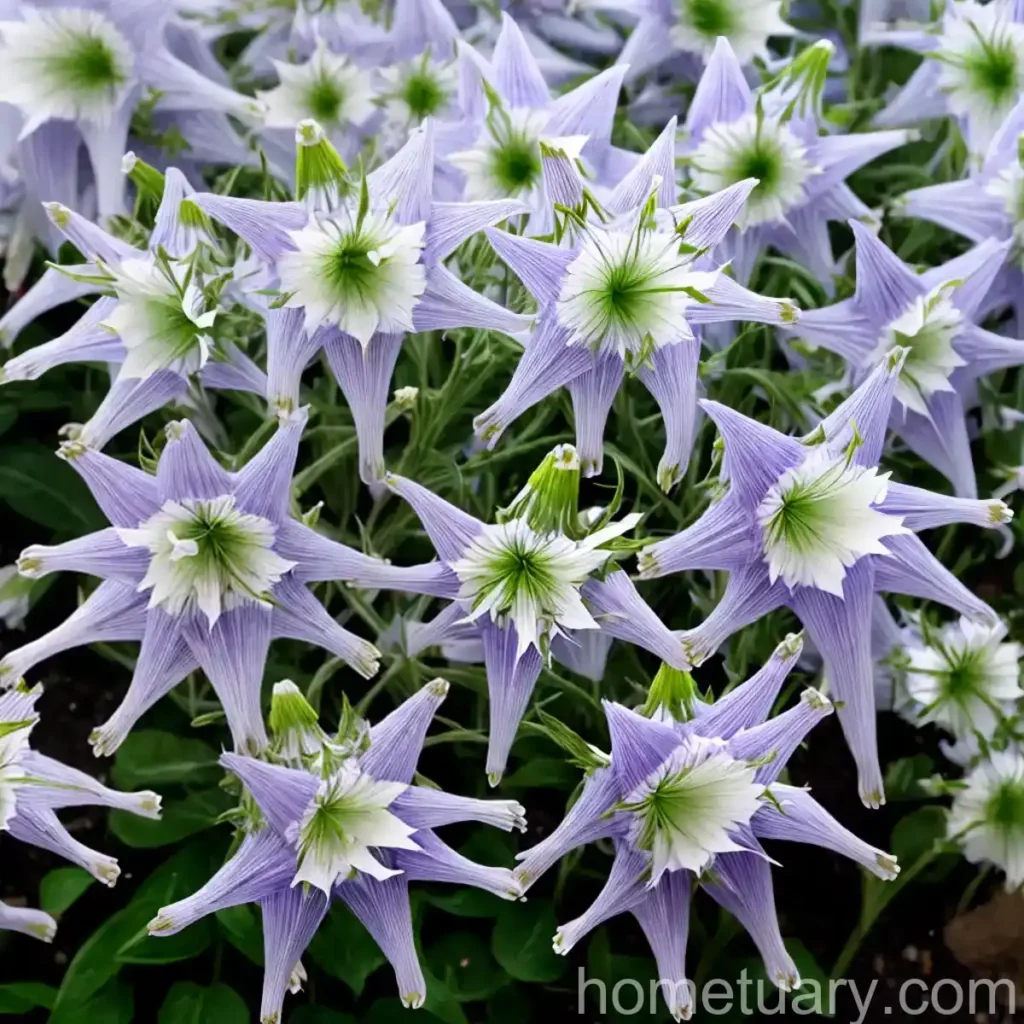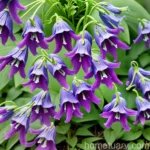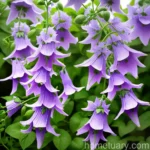Tussock Bellflower (Campanula carpatica f. alba ‘Weisse Clips’ WHITE CLIPS)
Tussock bellflower, also known as Campanula carpatica f. alba ‘Weisse Clips’ or White Clips, is a stunning perennial plant that is a favorite in many home gardens. With its delicate white bell-shaped flowers and compact growth habit, this versatile plant is a great addition to any garden landscape.
In this comprehensive guide, we will explore the key aspects of the tussock bellflower, including its culture, uses, care requirements, common diseases and pests, as well as propagation and container gardening tips. By the end of this article, you will have all the information you need to successfully grow and maintain this beautiful plant in your own garden.
What is Tussock Bellflower (Campanula carpatica f. alba ‘Weisse Clips’ WHITE CLIPS)
Tussock bellflower, scientifically known as Campanula carpatica f. alba ‘Weisse Clips’, is a herbaceous perennial plant that belongs to the Campanulaceae family. This plant is native to the Carpathian Mountains in Central and Eastern Europe, where it can be found growing in rocky hillsides, grasslands, and open woodlands.
The “alba” in the botanical name refers to the white flowers, while “Weisse Clips” is a variety known for its compact growth habit and abundance of flowers. The name “Tussock” comes from the tufted or clump-forming nature of the plant.
This particular variety of tussock bellflower is known for its profusion of pure white, star-shaped flowers that adorn the plant from late spring to early summer, with some cultivars flowering into the fall. The flowers rise above a mound of dark green, heart-shaped foliage, creating an eye-catching display in any garden setting.
Tussock bellflower is a low-maintenance plant that is prized for its long-lasting blooms and versatility in the garden. Whether used as a ground cover, in rock gardens, or as a border plant, the tussock bellflower adds charm and elegance to any landscape.
Key Takeaways
Before delving into the various aspects of the tussock bellflower, let’s summarize the key takeaways:
- Plant Name: Campanula carpatica f. alba ‘Weisse Clips’ (White Clips)
- Family: Campanulaceae
- Common Name: Tussock Bellflower
- Flower Color: White
- Growth Habit: Clump-forming, compact
- Blooming Period: Late spring to early summer (some cultivars may bloom into fall)
- Versatile Uses: Ground cover, rock gardens, borders
- Low Maintenance: Long-lasting blooms, easy to grow
With the key takeaways in mind, let’s explore the various aspects of growing and caring for the tussock bellflower in more detail.
Culture
Uses
Tussock bellflower (Campanula carpatica f. alba ‘Weisse Clips’) is a versatile plant with several uses in the garden. Some of the common uses of this plant include:
- Ground Cover: The low-growing nature of the tussock bellflower makes it an excellent ground cover plant. Its dense foliage and abundance of flowers create a beautiful carpeting effect, making it ideal for filling in bare spots and suppressing weed growth.
- Rock Gardens: The compact growth habit and charming flowers of the tussock bellflower make it a perfect addition to rock gardens. It can be nestled between rocks or used to cascade over edges, adding a soft and delicate touch to the landscape.
- Borders and Edging: The tidy, mounding growth of the tussock bellflower makes it well-suited for border plantings. Whether lining pathways, defining garden beds, or edging flower borders, this plant brings a touch of elegance to any garden setting.
Water
Tussock bellflowers prefer consistently moist soil, especially during the growing season. Adequate watering is crucial, particularly during dry spells or periods of drought. However, it is essential to avoid waterlogged conditions, as this can lead to root rot and other issues. A well-draining soil will help maintain the right moisture levels for the plant.
Sunlight
In terms of sunlight requirements, tussock bellflowers thrive in partial to full sun. While they can tolerate some shade, they generally prefer at least six hours of direct sunlight each day for optimal growth and flowering.
Fertilizer
When it comes to fertilizing tussock bellflowers, a balanced, all-purpose fertilizer can be applied in the spring as new growth emerges. It is essential to follow the manufacturer’s instructions for the specific fertilizer being used. Additionally, organic compost can be applied around the base of the plant to provide essential nutrients and improve soil structure.
Soil
Tussock bellflowers thrive in well-draining, moderately fertile soil. A neutral to slightly alkaline soil pH is generally preferred. If the soil is heavy or compacted, amending it with organic matter such as compost or well-rotted manure can improve drainage and overall soil quality.
Pruning
Pruning can help maintain the compact shape of the tussock bellflower and encourage continuous blooming. Deadheading, or the removal of spent flowers, can prolong the blooming period and prevent the plant from self-seeding. Additionally, any damaged or diseased foliage should be promptly removed to maintain the plant’s health and appearance.
Propagation
Tussock bellflowers can be propagated through several methods, including division, seed sowing, and stem cuttings. Here are some common propagation techniques:
-
Division: In early spring or fall, established tussock bellflower clumps can be divided by carefully lifting the plant and separating the root mass into smaller sections. Each division should have several healthy shoots and a portion of the root system. These divisions can be replanted in suitable locations to establish new plants.
-
Seed Sowing: Tussock bellflower seeds can be sown indoors in late winter or early spring, or directly outdoors in the spring or fall. It’s important to follow specific seed sowing instructions, which may include stratification for certain varieties.
-
Stem Cuttings: In the early summer, semi-ripe stem cuttings can be taken from healthy tussock bellflower plants. These cuttings should be treated with a rooting hormone and placed in a suitable growing medium to develop roots.
Container Popularity
Tussock bellflowers are a popular choice for container gardening, thanks to their compact growth habit and attractive flowers. When grown in containers, they can be showcased on patios, terraces, or even balconies, adding a touch of elegance to outdoor spaces. The versatility of container-grown tussock bellflowers allows gardeners to create stunning displays with minimal space requirements.
Common Diseases
While tussock bellflowers are relatively low-maintenance, they can be susceptible to certain diseases under unfavorable growing conditions. Some common diseases that may affect tussock bellflowers include:
-
Powdery Mildew: This fungal disease appears as a white, powdery coating on the leaves, stems, and flowers of the plant. It can weaken the plant and lead to a decline in overall health and vigor.
-
Root Rot: Excessive soil moisture and poor drainage can lead to root rot in tussock bellflowers. The roots become waterlogged, leading to decay and a decline in plant health.
-
Botrytis Blight: Also known as gray mold, botrytis blight can affect the flowers and foliage of the tussock bellflower, causing them to become discolored and decayed.
Disease Diagnosis
Diagnosing and treating plant diseases is an essential aspect of maintaining a healthy garden. When dealing with potential diseases in tussock bellflowers, it is important to accurately identify the symptoms and seek appropriate interventions. Some common signs of disease in tussock bellflowers include:
-
Discoloration: Changes in leaf color, such as yellowing or browning, can be indicative of disease or nutrient deficiencies.
-
Wilting: Sudden wilting or drooping of foliage, despite adequate watering, can signal potential disease issues.
-
Abnormal Growth: Malformed or stunted growth, as well as the development of abnormal lesions or spots, may indicate disease problems.
Common Pests
While tussock bellflowers are relatively resistant to pests, certain insects may still pose a threat to the plant. Some common pests that may affect tussock bellflowers include:
-
Aphids: These small, soft-bodied insects may cluster on the tender new growth of tussock bellflowers, sucking sap from the plant and causing distortion of foliage.
-
Slugs and Snails: These mollusks can feed on the leaves and flowers of tussock bellflowers, leaving behind characteristic holes and damage.
-
Spider Mites: These tiny pests can be identified by the fine webbing they produce on the undersides of leaves. They can cause stippling and discoloration of the foliage.
Botanist’s Tips
As a plant scientist, I have some essential tips for successfully growing and caring for tussock bellflowers:
-
Good Drainage: Ensure that the soil has adequate drainage to prevent waterlogging, which can lead to root rot and other moisture-related issues.
-
Deadheading: Regular deadheading can extend the blooming period of tussock bellflowers and promote continuous flower production.
-
Mulching: Applying a layer of organic mulch around the base of the plant can help conserve soil moisture, suppress weed growth, and improve overall soil health.
-
Regular Inspection: Periodically inspect tussock bellflowers for signs of pests, diseases, or nutrient deficiencies, and take appropriate measures to address any issues promptly.
-
Supportive Structures: In areas with strong winds or heavy rainfall, providing support or protection for tussock bellflowers can prevent damage to the delicate stems and flowers.
Fun Facts
Here are some interesting and lesser-known facts about tussock bellflowers:
-
Attracts Pollinators: The bell-shaped flowers of tussock bellflowers are attractive to pollinators such as bees, butterflies, and hummingbirds, adding biodiversity to the garden.
-
Edible Flowers: The delicate flowers of the tussock bellflower are edible and can be used to garnish salads or desserts.
-
Medicinal Uses: In some traditional herbal medicine practices, certain parts of the tussock bellflower are used for their purported medicinal properties.
-
Historical Significance: Tussock bellflowers have been cultivated in gardens for centuries and have cultural significance in various regions due to their aesthetic appeal and adaptability.
Links to External Resources
For additional information about tussock bellflowers, their cultivation, and garden uses, consider exploring the following external resources:
- Royal Horticultural Society – Campanula carpatica
- Missouri Botanical Garden – Campanula carpatica
- University of Wisconsin-Madison Extension – Growing Campanula (Bellflower)
- North Carolina State University Extension – Campanula carpatica
- Plant Network – Campanula carpatica f. alba ‘Weisse Clips’
In conclusion, the tussock bellflower (Campanula carpatica f. alba ‘Weisse Clips’ WHITE CLIPS) is a charming and versatile plant that adds beauty and elegance to gardens. With its graceful white flowers, compact growth habit, and low-maintenance nature, this perennial is an excellent choice for various garden settings. By understanding its cultural needs, uses, care requirements, and potential issues, gardeners can cultivate thriving displays of tussock bellflowers and enjoy their enduring beauty in the landscape.















